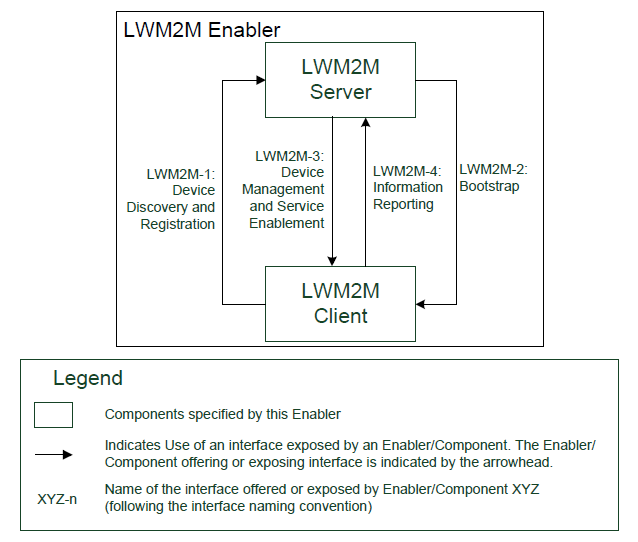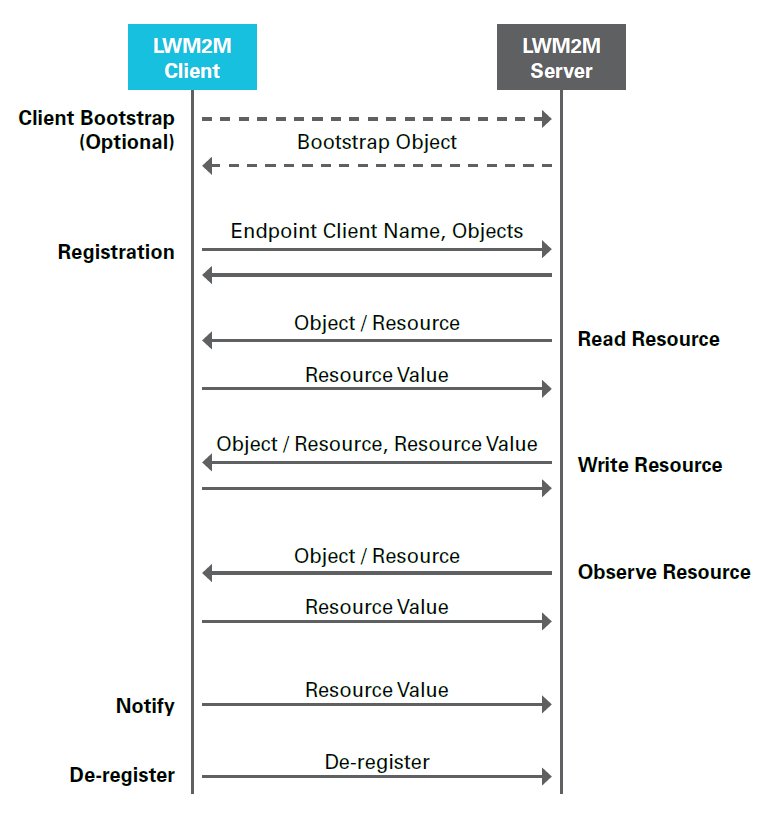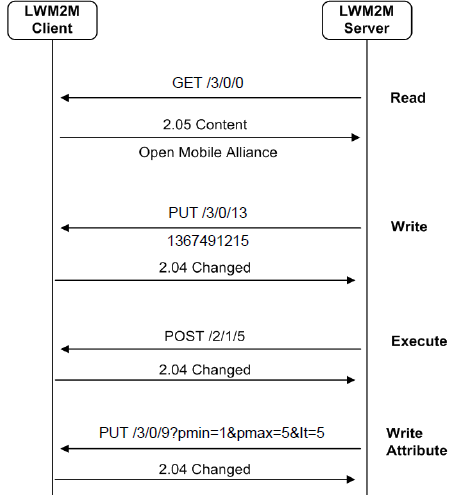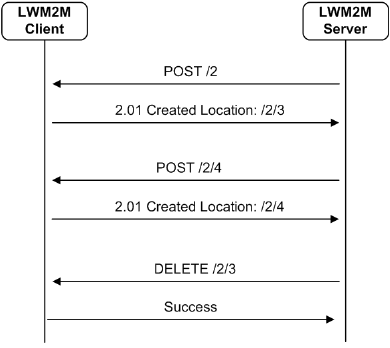API Defined by LWM2M
Overview
The LWM2M Enabler consists of two components: LWM2M Server and LWM2M Client. LWM2M designs the following four types of APIs for the interaction between the two components:
- API for device discovery and registration
- Bootstrap API
- API for device management and service enablement
- Information reporting API
API Model
The following figure shows an API model defined by LWM2M.

Message Interaction Process
The following figure shows the message interaction process defined by LWM2M.

API for Device Management and Service Enablement
Each type of LWM2M APIs represents a type of functions. The API for device management and service implementation is one of the four types of APIs defined by LWM2M.
The functions of the four types of APIs are implemented by the following two operations:
- Upstream operation: LWM2M Client –> LWM2M Server
- Downstream operation: LWM2M Server –> LWM2M Client
LWM2M Server accesses object instances and resources of the LWM2M Client through the API for device management and service enablement. This API implements seven operations including create, read, write, delete, execute, write attributes, and discover.

|
API |
Operation |
Direction |
|---|---|---|
|
Device management and service enablement |
Create, read, write, delete, execute, write attributes, and discover |
Downstream |
The following figure shows the interaction process implemented by the API for device management and service enablement.


Feedback
Was this page helpful?
Provide feedbackThank you very much for your feedback. We will continue working to improve the documentation.See the reply and handling status in My Cloud VOC.
For any further questions, feel free to contact us through the chatbot.
Chatbot





